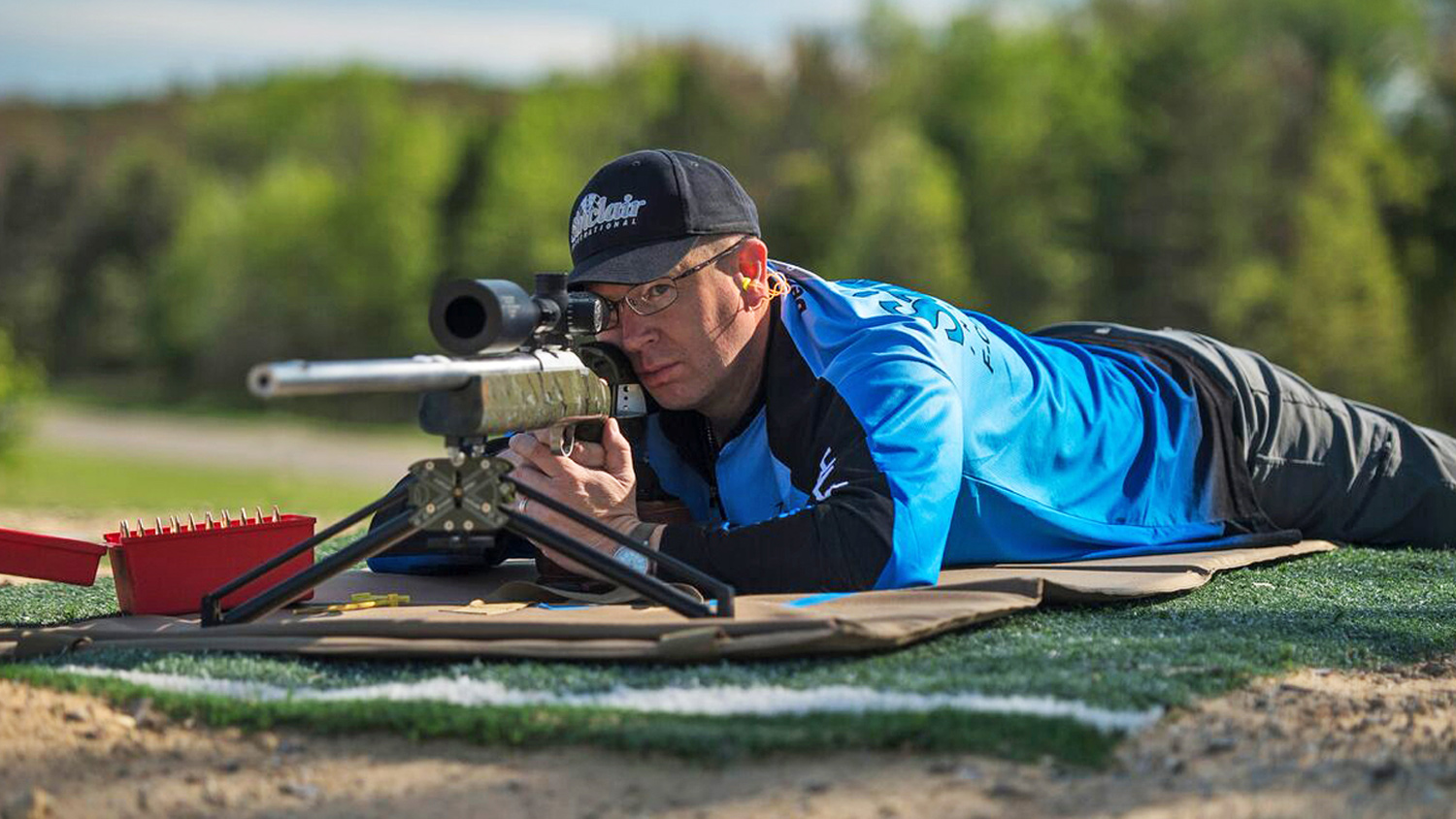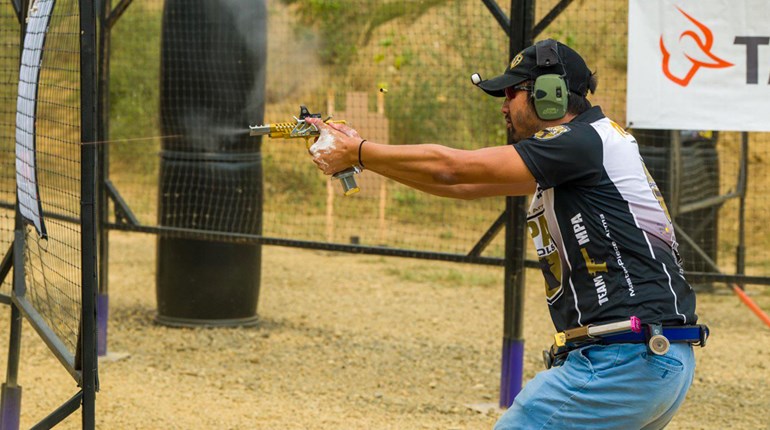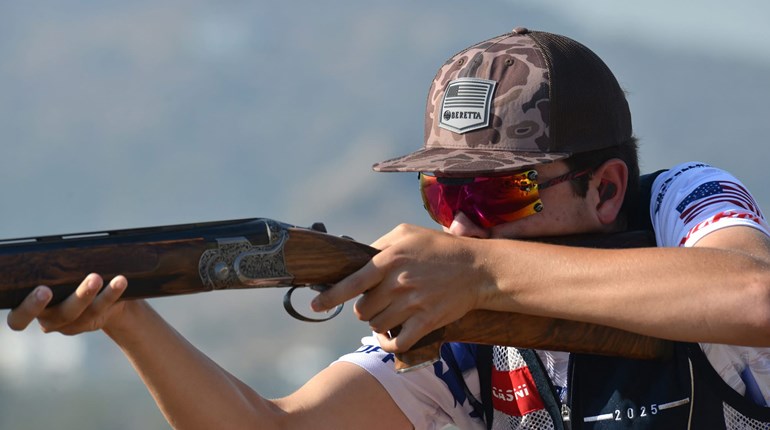
Since Derek Rodgers was brought up around hunting and shooting—it’s not surprising he picked up his first firearm at five years old. Although he first shot a .22LR, Derek’s love was for a good quality pellet gun, the RWS Model 45 in .177 cal. 35 years ago. He literally shot that pellet gun so much the spring eventually broke. That made him a decent offhand shooter. At 11 years old, he hunted deer for the first time using a Remington Model 600 in 6mm, a “hand-me-down” his mom used. It proved to be plenty of rifle and enough to take his first deer with one shot.
Derek started competing in the early 2000s with a .50 BMG, shooting 1000-yard competitions at the NRA Whittington Center in Raton, NM. The reason he started competing is somewhat unique. He was on a ridge hunting mule deer and saw two bucks that were in a location that did not allow him to get any closer and were out of normal rifle range. At that point, he knew he needed a rifle that would shoot further. So his quest began for long range shooting and he bought a .50 BMG. Unfortunately, that was not the place to start shooting far, nor was it the correct way to learn how to reload. Eventually he gave up on the .50 BMG. In 2006, he started shooting F-Class with a used .308 Win., and by 2007, he shot his first NRA sanctioned match.
Derek Rodgers major accomplishments include:
- 2010 F-Class National Champion – Open
- 2013 F-Class National Champion – F-T/R
- Broke three of the last four 1000-yard National Records at 1000 yards in F-T/R
- Current 1000-yard individual National Record holder in F-T/R with a 200-14X
- 2015 and 2016 Berger Southwest Nationals Champion – F-T/R
- 2017 King of 2 Miles Winner (Only person who has hit the 2 mile target)
- 2017 F-Class World Champion - F-T/R
For competition Derek shoots rifles built primarily with McMillan stocks, Kelbly Panda or Barnard actions, Bartlein barrels, and Nightforce scopes. He uses Lapua brass, Berger 200-grain bullets and Hodgdon powders. This combination seems to always work for him— although he finds it refreshing to see that many other great offerings are becoming available from Peterson Brass and Sierra Bullets.
Derek uses a North Face backpack to carry all his expensive and small items in and a large rectangular canvas bag that opens on top with handles. The canvas bag holds everything oversized; such as sand bags, ammo, tools, bipod, and other miscellaneous gear.
Derek Rodger’s F-T/R Competition Checklist
- Rifle with scope and bipod
- Tools to adjust butt plate and check action bolts
- Cleaning rod
- Spare trigger
- Rifle case to protect the rifle
- Ammo in suitable ammo boxes
- Empty chamber indicator
- ESP electronic ear protection, foam ear protection, and a tactical low profile ear muff
- RX shooting glasses and dark sunglasses
- Wind meter, Kestrel, iPad and Garmin Fortrex 701
- Foldable cart and Crosstac shooting mat
- Rain cover for scope, rifle, and tarp with bungee cords to protect what is in the cart
- Front bipod board
- Edgewood rear bag with a dead bottom bag for height adjustment
- Small clipboard for score card, pen or pencil
- Timer or stopwatch
- Chair or stool
- Spotting scope and scope stand
- Labradar
- TargetVision ELR camera system
- Hat, rain coat and pants
- First aid kit, sunblock and insect repellant
- Water, other drinks and snacks
For those interested in getting into competitive shooting, Derek suggests learning from someone with lots of experience. This will help avoid the pitfalls that waste time, money and ultimately success. Also shoot—a lot. It’s important to work on the fundamentals and develop a technique that works. Once you start competing, don’t worry about shooting high scores. Work on eliminating your lowest scoring ring first. For example, if you’re shooting 6-ring scores, work on getting rid of those. Next time, work on improving from the 7-ring. As you continue to remove the weakest ring, the scores will go up by default.
Not too long ago, Derek added a Target Vision camera to his shooting program. He can now see the order of his impacts and number them, take a picture of the results and share it with a few of his peers for comparison of load data. It allows him to shoot for groups by himself at very long distances and know exactly what is happening. His camera will work out to two miles. This amazing tool brings all the effort in reloading and testing loads together. Rodgers finds this so useful he actually now uses it at local matches and plots his shots right on the picture of the target.


































